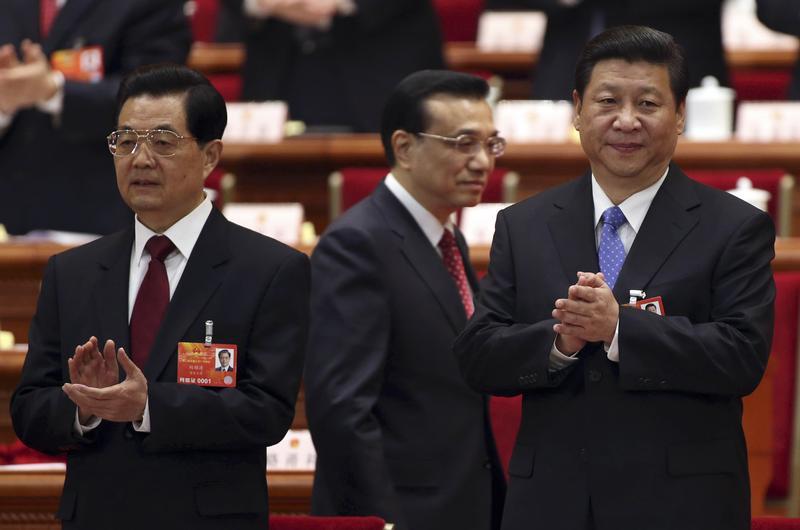Beyond the boom: China’s struggle to balance growth and consumption
China has sustained average growth rates of nearly 10% for several decades, lifting nearly 800 million people out of extreme poverty, according to the World Bank.
Yet, this does not imply that China is the economic utopia some modern theorists envision, particularly in a post-COVID context. Despite ending the One-Child Policy, China faces a faltering real estate market, with massive apartment blocks being demolished due to lack of demand, and an unsustainable Belt and Road Initiative has led some analysts to reevaluate the once optimistic outlook that China’s economy had the potential to become the world’s largest economy.
The primary concern for both Chinese officials and foreign economists is that domestic consumption remains dangerously low. Consumption, along with investment, government spending, and net exports, are the four key components of China’s $18.5 trillion GDP. Globally, consumption is consistently the largest component, with the World Bank estimating that it makes up 75% of global GDP. However, China appears to buck this trend, with consumption contributing only about 53–54% of its GDP, while 42–43% comes from government-backed investment.
Falling consumption also poses a threat to the Chinese economy domestically, aside from its international implications
This economic structure is reminiscent of 1980s Japan, with the Financial Times recently warning of the “Japanification” of China. The parallels are striking, with both countries experiencing rapid economic growth in preceding decades, significant manufacturing sectors, and about 54% of GDP accounted for by consumption. What followed for Japan is likely a concern for senior Chinese officials: growth rates under the targeted 2% and a persistent struggle with deflation that keeps interest rates near zero. Japan’s “lost decades” are a fate China seeks to avoid, especially given the rise of its geopolitical rivals, including India, Vietnam, and a U.S. economy strengthened by Bidenomics.
Weakened domestic demand for goods has meant that annual profits in Chinese manufacturing have declined by 27%
Falling consumption also poses a threat to the Chinese economy domestically, aside from its international implications. Weakened domestic demand for goods has meant that annual profits in Chinese manufacturing have declined by 27%. Although this downturn is not universal, the labour-intensive nature of Chinese manufacturing has meant that falling profits and a need to economise have led 14 of China’s leading firms to lay off workers. The risk of rising unemployment poses not only an economic and ideological challenge—especially given China’s ongoing claims to socialism—but also a potential political threat, as seen in the wave of protests and demonstrations labelled “mass incidents” in 2022.
Why, then, can’t China seem to reap the full rewards of its economic miracle? The answer lies in the fact that China aims to secure its future prosperity through extensive government subsidies that drive growth, but drains consumption. For instance, China’s notoriously fragile and complex social safety net—where only 200 million of its 779 million working adults have unemployment insurance—forces citizens to save significant sums in case of job loss. This, combined with persistently low interest rates, has created a system with an ample supply of cheap money for Chinese state-owned banks to lend to businesses and the government, fueling growth and exports while suppressing Chinese consumption. The scale of these capital transfers from consumers to firms is so vast that it often accounts for 4–5% of China’s total GDP.
Chinese officials have announced a stimulus package worth over $1.4 trillion to increase household spending and alleviate local government debt
Given the risks to the Chinese economy and the persistent issue of low consumption, what steps might be taken to address this? Here, economists and Chinese treasury officials are divided. Chinese officials have announced a stimulus package worth over $1.4 trillion to increase household spending and alleviate local government debt. While this may bring short-term benefits by raising consumer spending and confidence, it would likely add to China’s already considerable debts, leaving it with one of the largest budget deficits in the world. Economists, however, argue for a fundamental shift in China’s economic structure toward supporting consumers and households, with transfers from firms to households. Such restructuring would come at the expense of Chinese firms that rely on government subsidies, as well as reducing capital available for domestic and international infrastructure projects.
Ultimately, although the future is uncertain, particularly in an opaque area like Chinese fiscal policy, the impact of China’s substantial stimulus in the coming months will be critical in addressing the chronic issue of low consumption amid the acute threat of a potential disruption in the global trade order, with a possible return to significant tariffs on China under a Trump presidency.

Comments (1)
Five BIG BOOMS!!!!!!!!!!